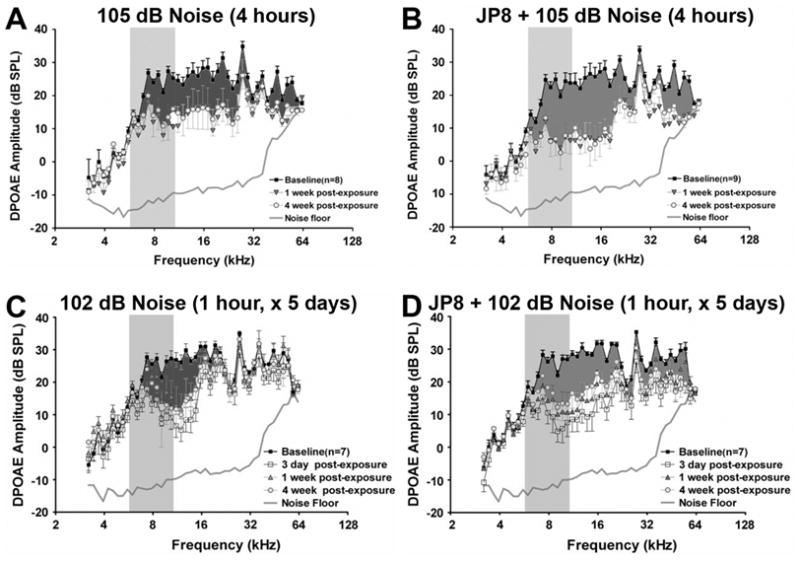Figure 1.

DPOAE amplitude shifts from a baseline (preexposure) in animals treated with noise or JP-8 and noise. (A) Rats exposed to 4 hours of 105 dB broadband noise displayed a 10 dB permanent threshold shift in DPOAEs across a wide range of frequencies 4 weeks after treatment (darker shaded area). (B) After serial exposure to jet fuel vapor (4 hours, 1000 mg/m3) and then noise (105 dB for 4 hours), 20 dB permanent threshold shifts in the DPOAEs were observed over a similar, wide frequency range 4 weeks after treatment. (C) Rats that received repeated exposure to noise (102 dB broadband noise for 1 hour/day) for 5 days had a narrow range of temporary threshold shifts (between 6 and 16 kHz), with a maximum shift of ~10 to 15 dB 1 week after exposure. After 4 weeks, DPOAE thresholds recovered slightly at some frequencies, resulting in a permanent threshold shift of ~10 dB (darker shaded area). (D) Rats exposed to both jet fuel (1000 mg/m3 for 4 hours) and noise (102 dB for 1 hour/day) for 5 days had temporary threshold shifts in DPOAE amplitudes over a wide range of frequencies (between 6 and 60 kHz) of ~20 dB. After 4 weeks, some recovery in thresholds can be observed, but permanent threshold shifts (darker shaded areas) of ~15 dB over a wide frequency range occurred compared with noise-only treated animals. In all experiments, untreated animals and animals that received jet fuel vapor alone showed little or no change in DPOAE thresholds (data not shown). (Adapted from Fechter LD, Gearhart C, Fulton S, et al. JP-8 jet fuel can promote auditory impairment resulting from subsequent noise exposure in rats. Toxicol Sci 2007;98:510–525.)
